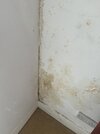- Joined
- 3 Jun 2024
- Messages
- 7
- Reaction score
- 0
- Country

Hi
I'm seeing damp issues on the chimney breast and external wall in the back bedroom of a mid errace victorian house. On the roof it seems like the flashing on the firewall and pots are the source of the water ingress and I'm seeing damage in the plaster and external wall as a result. If I sort the roof out (assuming thats root cause) what's the action for the internals? Any help appreciated it's all new to me!

I'm seeing damp issues on the chimney breast and external wall in the back bedroom of a mid errace victorian house. On the roof it seems like the flashing on the firewall and pots are the source of the water ingress and I'm seeing damage in the plaster and external wall as a result. If I sort the roof out (assuming thats root cause) what's the action for the internals? Any help appreciated it's all new to me!



